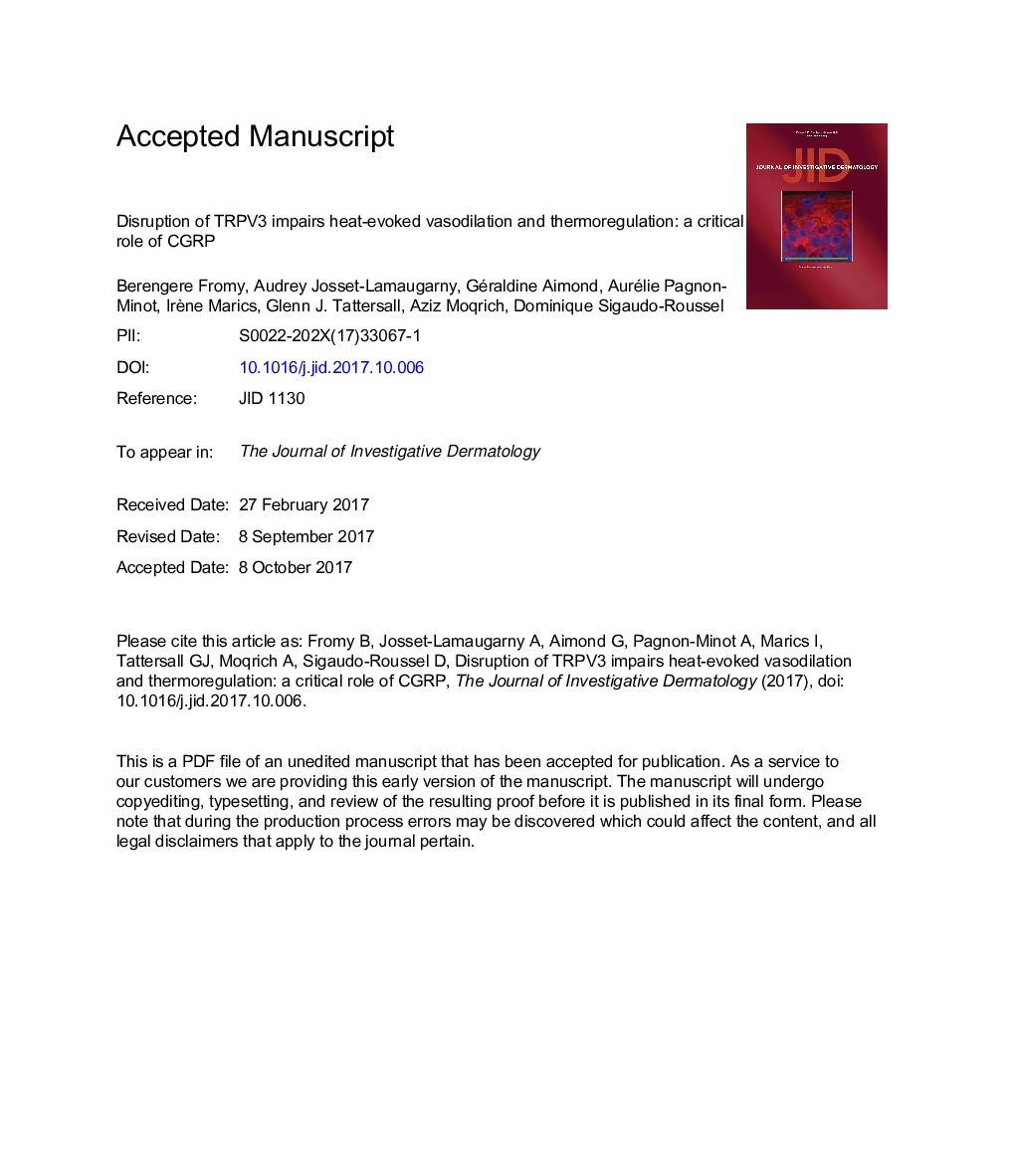| Article ID | Journal | Published Year | Pages | File Type |
|---|---|---|---|---|
| 8716125 | Journal of Investigative Dermatology | 2018 | 28 Pages |
Abstract
Sensing environmental temperature is a key factor allowing individuals to maintain thermal homeostasis via thermoregulatory mechanisms, including changes to skin blood flow. Among transient receptor potential channels, transient receptor potential vanilloid 3 (TRPV3) is a heat-activated cation channel highly expressed in keratinocytes. However, the role of TRPV3 in triggering heat-evoked cutaneous vasodilation is unknown. Using a murine in vivo model of local acute environmental heat exposure in the skin, we show that TRPV3 is involved in the local thermoregulatory control of skin blood flow by initiating the release of calcitonin gene-related peptide and nitric oxide in response to local heating of the skin. In addition to their contribution in local heat-evoked vasodilation, TRPV3, calcitonin gene-related peptide, and nitric oxide also contribute to internal body temperature stability during passive whole-body heating. This study provides in vivo demonstration of the role of TRPV3 as a strong modulator of cutaneous vascular thermoregulatory mechanisms.
Keywords
Related Topics
Health Sciences
Medicine and Dentistry
Dermatology
Authors
Berengere Fromy, Audrey Josset-Lamaugarny, Géraldine Aimond, Aurélie Pagnon-Minot, Irène Marics, Glenn J. Tattersall, Aziz Moqrich, Dominique Sigaudo-Roussel,
